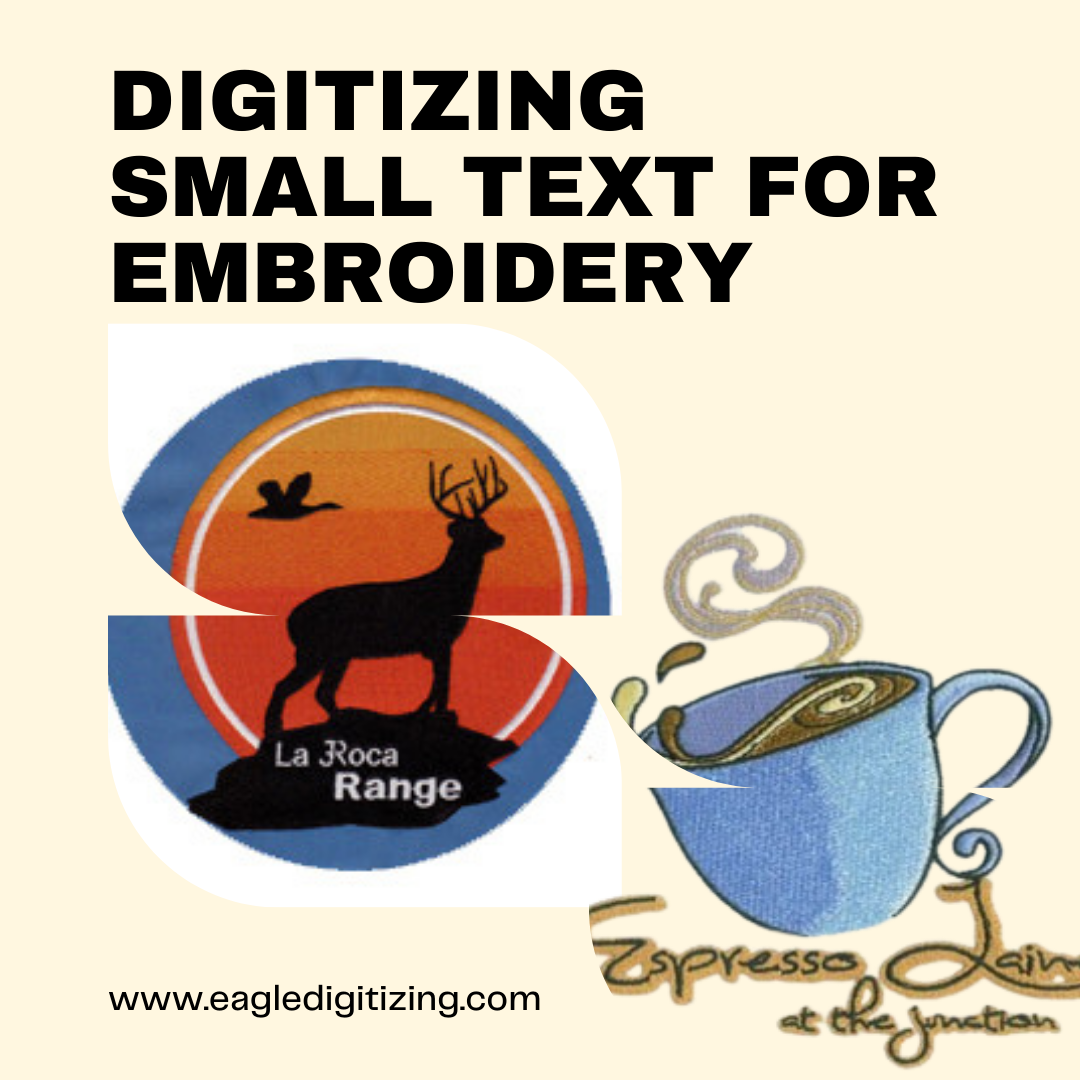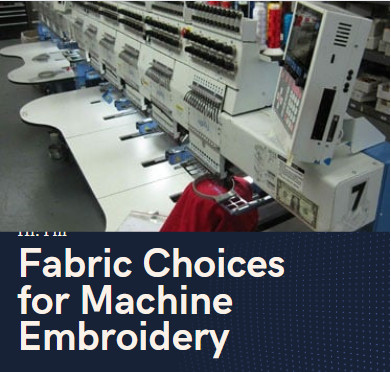How to Digitize Small Text for Crisp and Readable Embroidery?
Embroidery, an art form steeped in tradition and elegance, has evolved with modern technology, allowing for intricate designs and detailed text to be digitized and stitched with precision. In this article, we'll explore the intricacies of digitizingsmall text for embroidery, ensuring that every stitch is crisp and every word is readable.
Explanation
of digitization in embroidery
Embroidery digitization is the process of converting artwork or text into a digital format that can be read and interpreted by an embroidery machine. This involves translating design elements, such as shapes, lines, and colors, into a series of stitches that the machine can replicate on fabric.
Challenges
of digitizing small text
Digitizing small text presents unique challenges due to the intricacy of the design elements involved. Small letters require careful attention to detail to ensure that each stitch contributes to the overall readability of the text. Factors such as stitch density, font selection, and design simplification play crucial roles in overcoming these challenges.
Importance
of font selection for small text embroidery
The font you choose can make or break the readability of small text embroidery. Fonts with clear, defined lines and minimal intricate details are best suited for small-scale embroidery projects. Avoiding overly ornate or decorative fonts ensures that the text remains legible, even at reduced sizes.
Characteristics
of fonts suitable for small text
Fonts suitable for small text embroidery typically feature simple shapes and clean lines. Sans-serif fonts, such as Arial or Helvetica, are often preferred for their readability and versatility. Additionally, fonts with consistent stroke widths and ample spacing between letters help maintain clarity and legibility.
Importance
of simplicity in small text designs
Simplicity is key when digitizing small text for embroidery. Complex design elements can become muddled and indistinct when embroidered at a small scale, making it difficult to discern individual letters. By simplifying design elements and focusing on essential details, you can ensure that the text remains clear and legible.
Techniques
for simplifying complex design elements
Techniques such as minimizing fine details, increasing letter spacing, and using bold strokes can help simplify complex design elements for small text embroidery. By reducing the intricacy of the design, you can enhance the overall readability and visual impact of the embroidered text.
Role of
stitch density in small text embroidery
Stitch density refers to the number of stitches per unit of area and plays a significant role in the appearance and durability of embroidered text. Adjusting stitch density allows for precise control over the clarity and definition of small text, ensuring that each letter is crisp and well-defined.
How to
adjust stitch density for optimal results
Experimenting with different stitch densities and test stitching on various fabrics can help determine the optimal settings for small text embroidery. Increasing stitch density enhances the crispness of the text while decreasing density can create a softer, more delicate appearance. Finding the right balance is essential for achieving professional-quality results.
Importance
of thread and needle selection for small text
Selecting the right thread and needle is essential for achieving high-quality small text embroidery. Fine threads and sharp needles ensure precise stitching and minimize thread breaks or snagging, resulting in clean, crisp text.
Types
of threads and needles suitable for small text embroidery
Fine embroidery threads, such as 60 or 80 weight, are ideal for small text embroidery, as they create delicate, defined stitches. Sharp needles with a small eye size prevent fabric distortion and ensure accurate stitch placement, further enhancing the overall quality of the embroidered text.
Significance
of hooping in embroidery
Proper hooping is crucial for stabilizing the fabric and ensuring precise stitch placement during embroidery. Improper hooping can lead to fabric distortion or misalignment of the design, resulting in subpar embroidery quality.
Techniques
for properly hooping fabric for small text embroidery
Hooping the fabric with proper tension and ensuring that the design is centered and aligned correctly minimizes distortion and ensures crisp, readable text embroidery. Taking care during the hooping process is essential for achieving professional-quality results.
Importance
of testing small text designs before final production
Testing small text designs allows for adjustments to be made before final production, ensuring that the embroidered text meets quality standards. Conducting test stitches on sample fabrics helps identify any potential issues or areas for improvement, allowing for refinement of the design.
Techniques
for refining small text designs based on test results
Analyzing test stitchouts for factors such as stitch density, thread tension, and readability allows for the refinement of the digitized design. Making adjustments based on test results ensures that the final embroidery meets the desired quality and clarity, resulting in professional-looking text.
Overview
of software tools for digitizing embroidery designs
Specialized embroidery digitizing software offers advanced features and tools for creating and editing embroidery designs, including small text. These programs allow for precise control over design elements and stitch settings, making them invaluable tools for digitizing small text.
Features
to look for in software for small text digitization
When selecting embroidery digitizing software for small text embroidery, look for features such as automatic lettering, stitch editing capabilities, and the ability to adjust stitch density and spacing. These features streamline the digitization process and ensure high-quality results, even with intricate small text designs.
Importance
of contrast for readability in small text embroidery
The contrast between the fabric and thread colors is essential for ensuring that small text remains readable and visually appealing. Optimal contrast enhances the visibility of the text and improves overall legibility, making it stand out against the background fabric.
Tips
for selecting fabric and thread colors for optimal contrast
Choose fabric and thread colors that provide sufficient contrast to ensure that the text stands out against the background. Dark threads on light fabrics or vice versa often provide the best results for small text embroidery, enhancing the overall clarity and readability of the embroidered text.
Causes
of distortion in small text embroidery
Distortion in small text embroidery can occur due to factors such as improper hooping, excessive stitch density, or design inconsistencies. Identifying and addressing these causes is essential for achieving crisp, distortion-free text embroidery.
Techniques
for avoiding distortion in small text designs
Proper hooping techniques, careful selection of stitch density, and attention to design details can help minimize distortion in small text embroidery. Taking preventative measures ensures that the final embroidered text maintains clarity and readability, free from unwanted distortion.
Digitizing small text for crisp and readable embroidery requires attention to detail and a thorough understanding of the embroidery digitization process. By selecting the right font, simplifying design elements, adjusting stitch density, and utilizing proper techniques, you can ensure that every stitch contributes to the clarity and legibility of the final embroidery. With careful consideration and practice, you can create stunning embroidered text that captivates and delights viewers.
If you're looking for professional embroiderydigitizing services to bring your small text designs to life, look no further
than Eagle
Digitizing. With years of experience and a team of skilled
digitizers, we specialize in transforming artwork into high-quality embroidery
files that are crisp, clear, and ready for stitching. Contact us today to learn
more about our services and how we can help you elevate your embroidery
projects.



